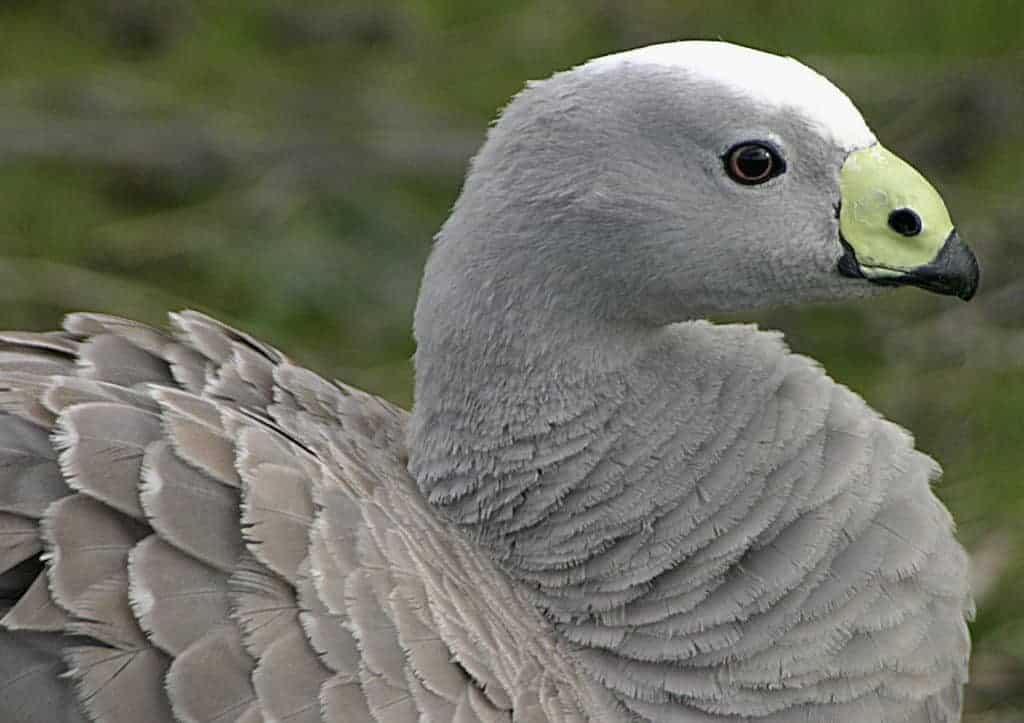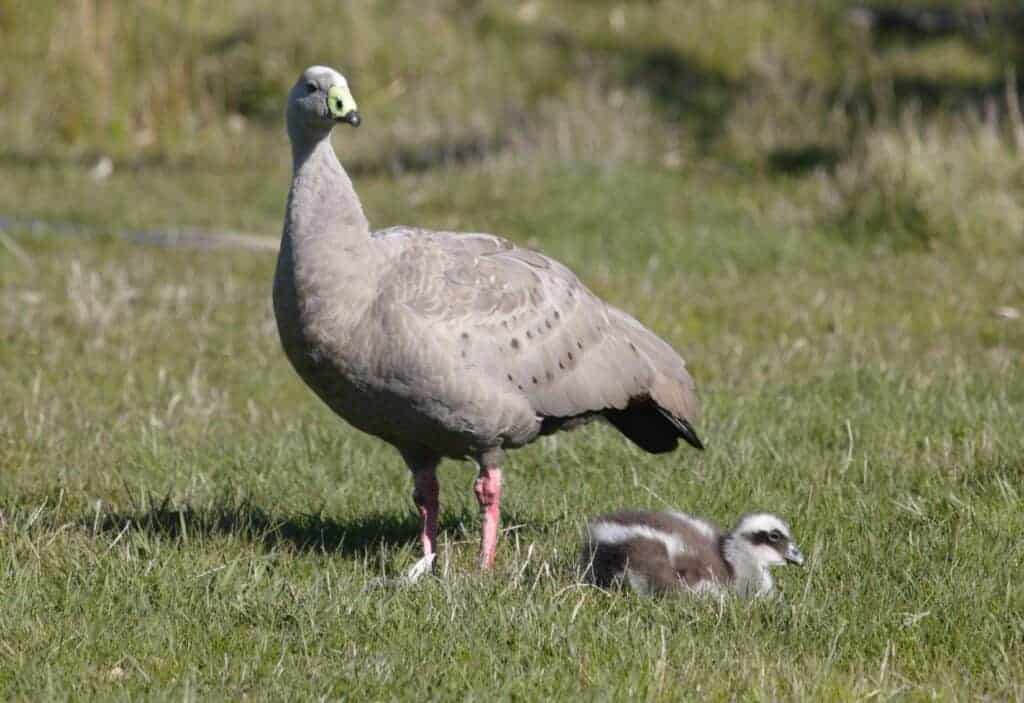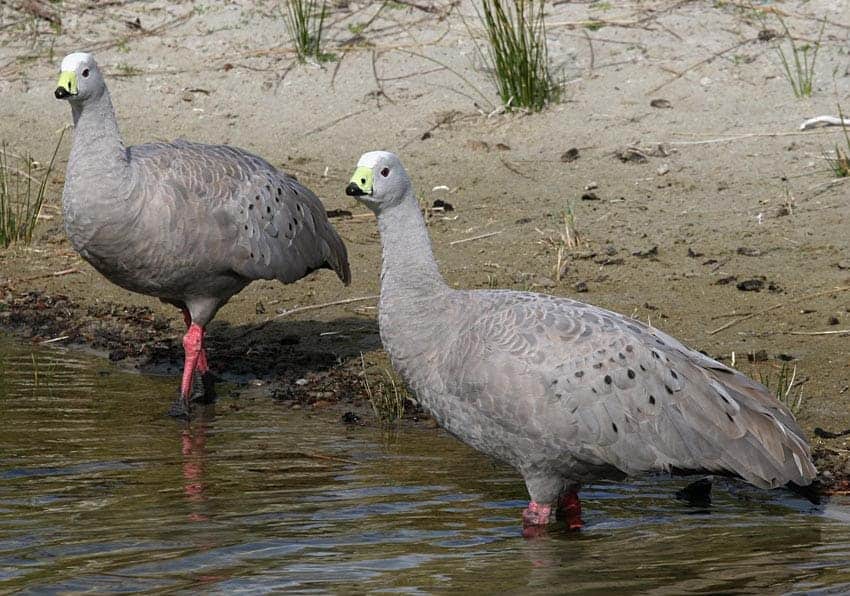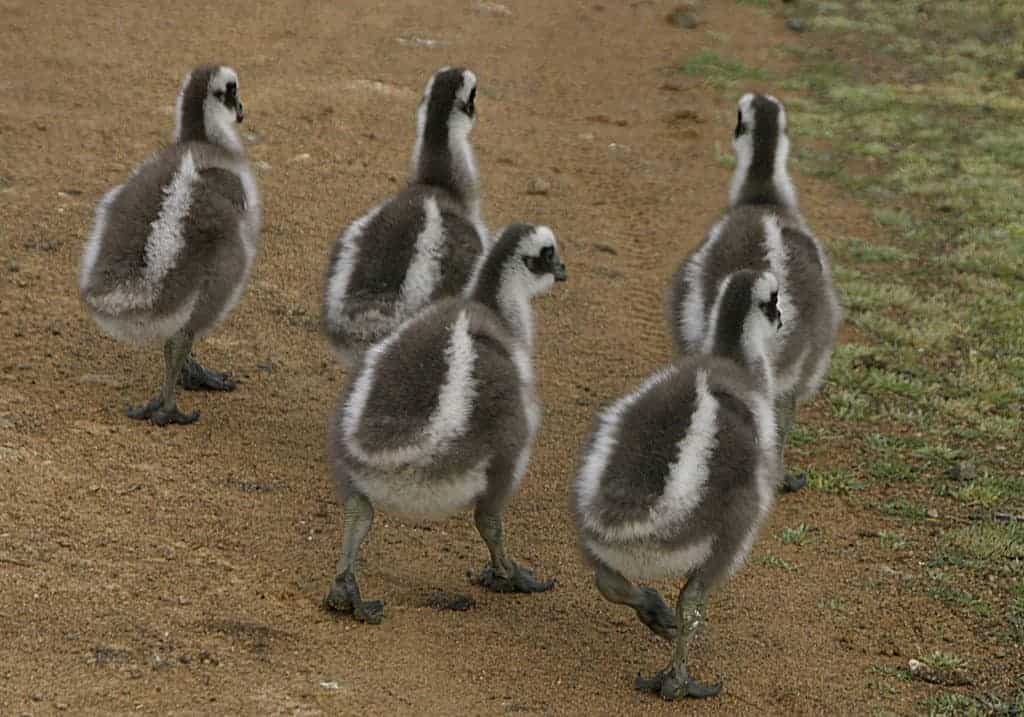Cape Barren Goose

Cereopsis novaehollandiae
There are two subspecies recognised:
- C. n. grisea – from the islands off south-west Australia, including Recherche Archipelago, and adjacent mainland of Western Australia.
- C. n. novaehollandiae – from south-east Australia, islands in the Bass Strait (Furneaux Group) and Tasmania.
Cape Barren Geese are particularly aggressive during the breeding season. Both artificial hatching and rearing and broodies can be used, but great care should be taken to avoid imprinting on humans. Ganders, particularly if imprinted, are liable to become particularly aggressive adults.

Cereopsis novaehollandiae
This charismatic bird is one of those species that is easily propagated, but does not always fare well with our attentions. They are strong and can be aggressive to humans. They require a separate spacious enclosure with good grazing and secure fencing, well-buried to prevent them digging their way out.
Cape Barren or Cereopsis Geese need careful handling. They may bite, scratch with their long sharp claws and beat you with their wings, which have well developed carpal knobs. When moving them it is best to use stock boards rather than trying to catch and carry them.

Despite these dire warnings, they can become extremely tame and endearing. Sadly bad behaviour is usually down to bad (human) parenting. Individuals sometimes sell at livestock auctions, only to be entered again at the following sale after causing mahem at the buyer’s collection. Thus we advise that this species only be purchased with caution.
Wheat and other grain, pellets, green food, and wholemeal bread should supplement good grazing; lucern (alfalfa) pellets may also be used.

Cape Barren Geese tend to nest over our winter. They lay 3-6 creamy white eggs on the ground, usually in a shallow nest of vegetation lined with down. Incuation is one of the longest in waterfowl; 34-37 days.
Both parents will fiercely defend the nest and young. Fresh lettuce and sprouting grain should be provided to downies as part of their diet. Goslings must be removed once reared – again we strongly recommend that human imprinting is avoided.